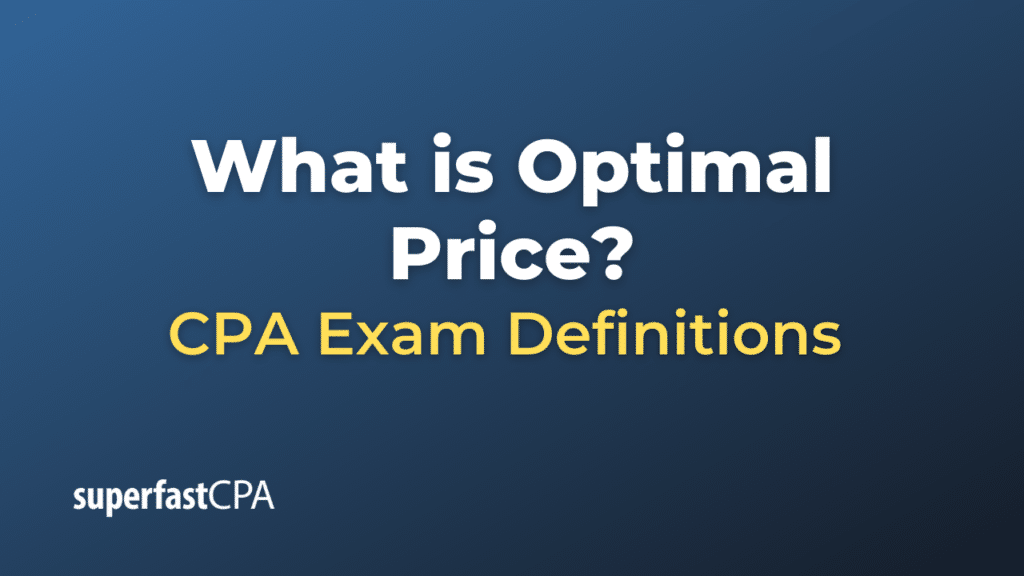Optimal Price
The optimal price is the price point at which a business can maximize its profits while considering factors such as demand, cost, and competition. It’s the price that allows a company to achieve the best balance between selling a high volume of products and earning a high profit on each unit sold.
Several methods are used to determine the optimal price, and they often require some level of experimentation and adaptation to market conditions. Here are a few commonly used methods:
- Cost-Plus Pricing : This method involves adding a mark-up to the cost of producing a product. This mark-up must be sufficient to cover overhead costs and provide a profit margin.
- Value-Based Pricing : This method involves setting a price based on the perceived value of a product or service to the customer rather than on the cost of production or market average.
- Market-Oriented Pricing: This involves setting a price based on a thorough analysis of the market, including competitor pricing and the price customers are willing to pay.
- Dynamic Pricing: This method involves changing prices based on real-time supply and demand. This is common in industries like travel and hospitality, where prices can fluctuate frequently based on availability.
- Penetration Pricing: Here, a low initial price is set to attract customers and gain market share, and the price is increased once this goal is achieved.
- Price Skimming: In this method, a high initial price is set when a product is first launched, and the price is gradually reduced over time as the novelty wears off and competition increases.
Remember that the optimal price can vary greatly depending on the specific circumstances of a business, including its cost structure, the competitive landscape, the nature of its products or services, and the behavior of its customers. It often requires a process of trial and error and should be regularly reviewed as market conditions change.
Example of Optimal Price
Let’s consider a company that sells handmade candles. The company is trying to determine the optimal price for a new candle line. They’ve already calculated their cost of production:
- Cost of materials per candle: $3.00
- Labor cost per candle: $2.00
- Overhead costs per candle: $1.00
Therefore, the total cost of producing one candle is $6.00.
Now, they need to decide how much profit they want to make on each candle. After considering their business goals and the competitive landscape, they decide to aim for a profit margin of 50%.
Using the cost-plus pricing method, they would calculate the selling price as follows:
- Selling price = cost of production / (1 – desired profit margin)
- Selling price = $6.00 / (1 – 0.50) = $12.00
So, based on their costs and desired profit margin, the optimal price for their candles would be $12.00.
But the story doesn’t end there. The company would also need to consider how customers will perceive this price. If comparable candles are typically sold for $10.00, customers may view the $12.00 price as too high, leading to lower sales volume. On the other hand, if the candles are seen as high-quality or unique, customers may be willing to pay a premium price.
In addition, the company should monitor the performance of the candles at this price point over time. If they’re not selling as many as anticipated, or if they’re selling out too quickly, it may be necessary to adjust the price. Through this process of observation and adjustment, the company can work toward finding the truly optimal price.













